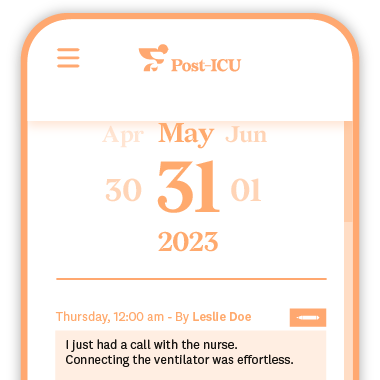6.15 am. My alarm rang. Time to get out of bed and get on the road, because today I have the opportunity to go to the DIPIC Research Kickoff day. This day is not only organized for meeting with the people who will be using the Post-ICU digital diary (professional caregivers such as ICU nurses), but also to learn about change and how to support people in a change process.
What is DIPIC?
For context, let’s first establish what this DIPIC research entails. DIPIC is an abbreviation of “Diary Implementation as a prelude to integrated Interventions in Person-centered care in the Intensive Care Unit”. Quite a mouthful of a research title, which is why it’s usually abbreviated to ‘DIPIC’. In short, the goal of this research is to work towards a more tailored implementation strategy for the Post-ICU diary. After having implemented the digital diary in dozens of hospitals, it’s become apparent that there is no ‘one size fits all’ implementation process. Therefore, it is very important to us to learn how we can best facilitate this process on an individual hospital basis.
The day started with an introduction session. We, the Post-ICU team, met with ICU nurses and the research leaders of the study. We also asked one ICU nurse who has already been working with the digital diary for years to join us so she could share her personal experiences. We got to know one another a bit before we dived deeper into the practicalities. We demonstrated the web-based application and answered any questions. It was nice to see that the nurses from different hospitals were chiming in to answer each other’s questions as well! And most importantly, I was happy to hear that they were really looking forward to implementing the Post-ICU diary. Some of them had been using a paper diary, and they were eagerly anticipating a modern, digital alternative. Awesome to hear.
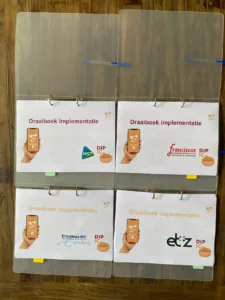

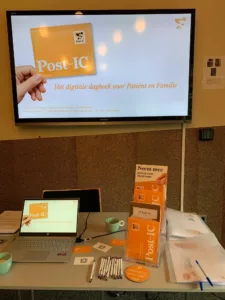
How to deal with resistance to change?
In the afternoon, it was time for the workshop “Coaching through change & Dealing with resistance”. This turned out to be a perfect addition to the morning program. Introducing a new piece of technology into the daily working process is usually not welcomed with open arms. At the very least, not by everybody. And this is something I can completely understand: I have spoken with many ICU nurses by now, and if one thing has become clear for me, it is that they often have turbulent working days. Taking care of a critically ill patient is not an easy feat.
However, improving the care process is pretty much impossible if you’re not willing to change the way you’re currently doing things. Which is the case when a hospital decides to implement the Post-ICU digital diary to improve their patient experience and family engagement. Linda de Vroed was our coach for this workshop. One of the first things she taught us was that changing a work process is much like a mourning process. Therefore, the ‘curve of change’ was very similar to the ‘curve of loss’.
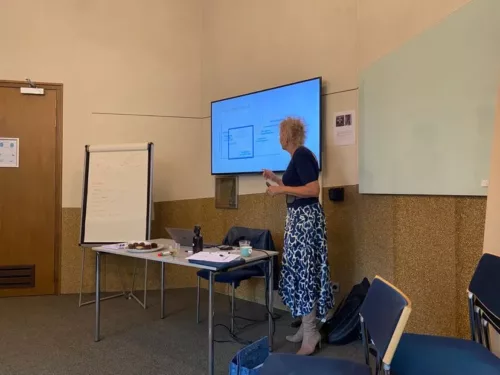
The Curve of Change
For example, similarly to when people mourn the loss of a loved one, they go through several stages of grief. And people all do this in their own unique way. One person can stay at a certain stage for longer, or loop back to a previous one, while another person never enters that stage. This same principle applies to the curve of change. It has multiple stages that people may or may not go through, and may or may not loop back to.
That said, the curve of change generally starts on a (predominantly) positive emotional level. After all, the prospect of change can, in many cases, be something exciting and interesting. But that can quickly change into a more neutral, or even (slightly) negative response. Why does that happen? Linda explained that this is often caused by not having enough information about the upcoming change in the work process. As a result, people may enter a stage of ‘change anxiety’ or they may even feel angry that they need to change their usual way of providing care.
Fortunately, this stage usually doesn’t last very long, and there are many things that can be done to help people enter the next stage of the curve: a stage where people are ready for a fresh start and start to feel committed to the change. And this is precisely the focus of the DIPIC study: what tools, information, or support can we provide professional caregivers and hospital management to help them embrace the addition of writing in an ICU diary to their total package of care?
We all finished the day with practical tools and ideas to try out. A great preparation for officially starting the DIPIC study.
More information about the DIPIC study can be found here (in Dutch).
Thank you coach Linda de Vroed.
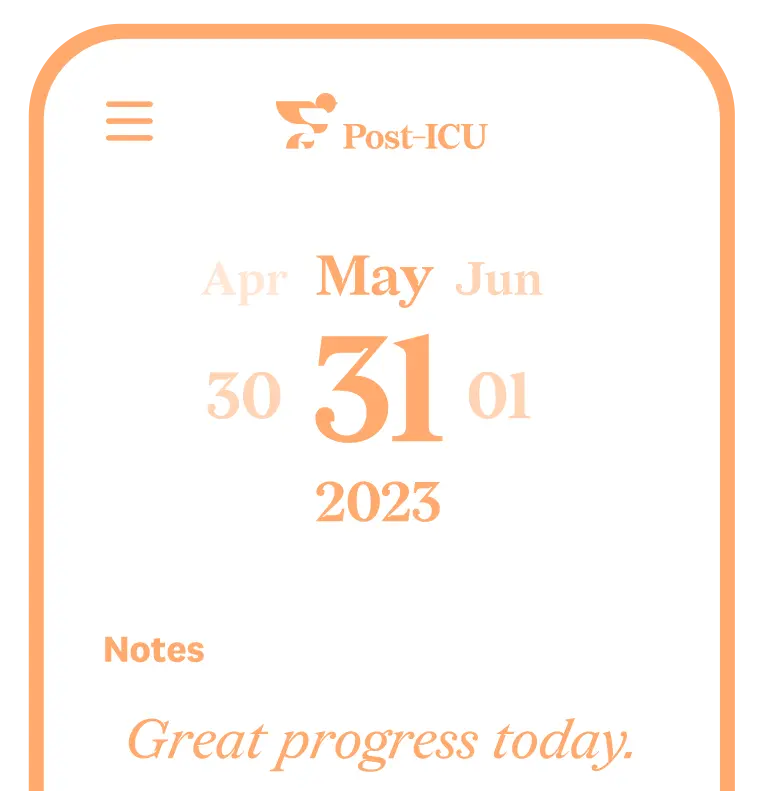
Ready for your own personal demo of the Post-ICU diary?
Book a meeting with one of our experts today.




















